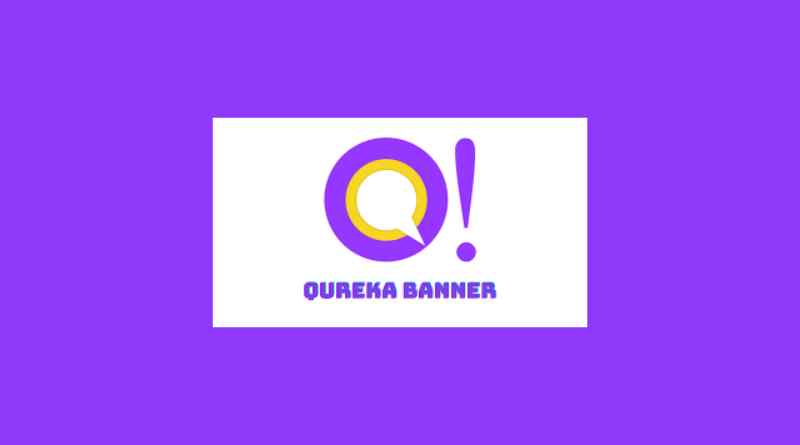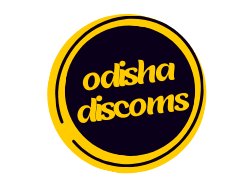Qureka Banner: A New Innovation in Digital Advertising

If “Qureka Banner” is a new technology or service that has emerged after my last update, I recommend checking the official website or reputable tech news sources for the most recent and detailed information about this innovation. If you have any other questions or if there’s a specific aspect of digital advertising you’d like to know more about, feel free to ask!
The Digital Advertising Revolution

The digital advertising industry has undergone a significant revolution in recent years, transforming the way businesses reach and engage with their audiences. Several key trends and innovations have contributed to this revolution:
- Data-Driven Advertising:
Data analytics and user insights have become crucial in digital advertising. Advertisers now leverage vast amounts of data to understand customer behavior, preferences, and demographics. This data-driven approach allows for highly targeted and personalized advertising campaigns.
- Programmatic Advertising:
Programmatic advertising uses algorithms to automate the buying of ads, making real-time bidding decisions and optimizing ad placements. This automation increases efficiency, reduces costs, and enables more precise targeting.
- Mobile-First Advertising:
With the widespread use of smartphones, advertisers have shifted their focus to mobile platforms. Mobile ads, including in-app ads and mobile-responsive web ads, have become a dominant force in the digital advertising landscape.
- Video Advertising:
Video content has gained immense popularity. Platforms like YouTube, social media networks, and streaming services offer advertisers opportunities to engage users through video ads. Live streaming and short-form videos have also become significant trends.
- Social Media Advertising:
Social media platforms have become advertising powerhouses. Advertisers can target specific demographics, interests, and behaviors, allowing for highly targeted campaigns. Influencer marketing, where brands collaborate with social media influencers, has also become a prevalent strategy.
- Native Advertising:
Native ads blend seamlessly with the content on the platform they appear on, providing a non-disruptive and more engaging experience for users. These ads match the look and feel of the surrounding content, making them more effective.
- Augmented Reality (AR) and Virtual Reality (VR) Ads:
AR and VR technologies have opened up new possibilities for immersive and interactive advertising experiences. Brands can create engaging campaigns that allow users to experience products and services in a virtual environment.
- Voice Search and Smart Speakers:
With the rise of voice-activated devices like Amazon Echo and Google Home, voice search has become a significant trend. Advertisers are adapting their strategies to optimize for voice search and explore new advertising opportunities in the realm of smart speakers.
- Blockchain in Advertising:
Blockchain technology is being explored to address challenges such as ad fraud and lack of transparency in the industry. By providing a decentralized and transparent ledger, blockchain can enhance the trust and security of digital advertising transactions.
- Privacy Regulations and User Privacy:
Privacy concerns have led to stricter regulations (such as GDPR in Europe) and changes in web browsers’ cookie policies. Advertisers are adapting to these changes by focusing on first-party data, implementing transparent data practices, and exploring alternative targeting methods.
The digital advertising revolution continues to evolve as technology advances and consumer behaviors change. Advertisers need to stay updated with the latest trends and innovations to create effective and engaging campaigns in this dynamic landscape.
Success Stories and Case Studies

Certainly, here are a few notable digital advertising success stories and case studies that demonstrate the effectiveness of various strategies and platforms:
- Dove’s Real Beauty Campaign:
Dove’s Real Beauty Campaign is one of the most famous examples of a successful digital marketing campaign. The campaign focused on real women and their beauty, challenging traditional stereotypes. Dove utilized social media platforms and created viral videos, encouraging women to share their real beauty stories. The campaign resulted in increased brand loyalty and sales.
- Airbnb’s Instagram Campaign:
Airbnb used Instagram as a primary platform for marketing. They encouraged users to share their own Airbnb experiences using a specific hashtag. This user-generated content served as powerful social proof and showcased the unique accommodations available through Airbnb. The campaign significantly increased their online presence and customer engagement.
- Old Spice’s Viral Video Campaign:
Old Spice created a series of humorous and memorable viral videos featuring the “Old Spice Guy.” These videos quickly went viral on YouTube and social media platforms. The interactive campaign, where the Old Spice Guy responded to fans’ comments and questions in real-time videos, generated widespread attention and significantly boosted sales.
- Blendtec’s “Will It Blend?” YouTube Series:
Blendtec, a blender manufacturer, created a YouTube series called “Will It Blend?” where they blended various items, including iPhones and golf balls, to demonstrate the power of their blenders. The entertaining and unconventional videos became a viral sensation, increasing brand awareness and sales.
- ALS Ice Bucket Challenge:
While not directly an advertising campaign, the ALS Ice Bucket Challenge became a global phenomenon on social media. It involved people dumping buckets of ice water over their heads and challenging others to do the same or donate to ALS research. This grassroots movement raised millions for the ALS Association, showcasing the power of user-generated content and social media for raising awareness and funds for charitable causes.
- Heineken’s Worlds Apart Campaign:
Heineken’s Worlds Apart campaign brought together strangers with differing views on social and political issues. They worked together on a task, discovering their differences in the process. The campaign emphasized finding common ground and promoting understanding. It was widely praised for its social message and garnered positive attention and engagement online.
- Nike’s Colin Kaepernick Ad:
Nike’s campaign featuring Colin Kaepernick, the NFL quarterback known for his protests against racial injustice, sparked significant controversy and conversation. The ad, with the tagline “Believe in something. Even if it means sacrificing everything,” generated immense buzz on social media, demonstrating Nike’s willingness to take a stance on social issues and resonating with their target audience.
These case studies highlight the creativity, authenticity, and strategic use of digital platforms that can lead to successful digital advertising campaigns. Each of these examples leveraged the unique features of digital media to create engaging and shareable content, resulting in increased brand visibility, engagement, and, ultimately, positive business outcomes.
Future Trends and Outlook
The landscape of digital advertising is continually evolving, with emerging technologies and changing consumer behaviors shaping its future. Here are some key future trends and outlooks in the digital advertising industry:
- Artificial Intelligence (AI) and Machine Learning:
AI and machine learning algorithms will continue to play a significant role in digital advertising. These technologies enable better understanding of consumer behavior, allowing for highly personalized and targeted advertising campaigns. AI can also optimize ad placements, predict trends, and automate content creation.
- Voice Search and Smart Speakers:
As more people use voice-activated devices, advertisers will need to optimize their content for voice search. This includes understanding natural language queries and creating ads that are compatible with voice-based platforms like Amazon Alexa and Google Assistant.
- Augmented Reality (AR) and Virtual Reality (VR) Advertising:
AR and VR technologies provide immersive experiences. Advertisers can create interactive and engaging campaigns, allowing consumers to experience products and services in virtual environments. This trend is particularly relevant for industries like retail, real estate, and travel.
- Privacy and Data Protection:
Privacy concerns and regulations will continue to shape the digital advertising landscape. Advertisers will need to adapt to stricter data protection laws and find innovative ways to target audiences without compromising user privacy. First-party data and transparent data practices will be crucial.
- Video Content Dominance:
Video content will remain a powerful medium for advertising. Short-form videos, live streams, and interactive videos will continue to gain traction. Platforms like TikTok and YouTube Shorts will be essential for reaching younger audiences.
- Social Commerce and Influencer Marketing:
Social media platforms are becoming full-fledged marketplaces. Social commerce, where products can be directly purchased within social media apps, will become more prevalent. Influencer marketing will continue to be a key strategy for brands to reach highly engaged niche audiences.
- Native Advertising and Content Marketing:
Native advertising, blending seamlessly with platform content, will remain effective. Content marketing, creating valuable and relevant content to attract and engage a specific audience, will be essential for building brand authority and trust.
- Programmatic Advertising Evolution:
Programmatic advertising will become more sophisticated. AI-driven programmatic ads will enable real-time customization based on user behavior, ensuring highly targeted and relevant ad experiences.
- 5G Technology Impact:
The rollout of 5G networks will enable faster internet speeds and seamless connectivity. This will lead to more interactive ad formats, such as high-quality live streaming and AR experiences, without buffering issues, enhancing user engagement.
- Sustainability and Social Responsibility:
Consumers are increasingly conscious of environmental and social issues. Advertisers incorporating sustainability and social responsibility into their campaigns will resonate with environmentally conscious consumers. Green marketing and socially responsible messaging will gain prominence.
- Niche and Local Targeting:
Advanced targeting options will allow advertisers to focus on niche markets and local audiences more effectively. Hyper-local advertising, tailored to specific neighborhoods or even individual households, will become more achievable.
Staying ahead in the digital advertising landscape will require adaptability, creativity, and a deep understanding of emerging technologies and consumer behaviors. Brands and advertisers that embrace these trends and craft authentic, engaging experiences for their audiences are likely to thrive in the evolving digital advertising ecosystem.

